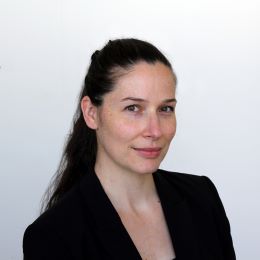Skip Navigation
Early Transition radiometal chemistry
Increasing availability of high energy, biomedical cyclotrons provides access to radiometals
with properties suitable for PET imaging and radiotherapy. We are interested in exploring
the the aqueous, radioactive coordination chemistry of early transition metals/pseudolanthanides,
specifically Ti(IV), Zr(IV), Sc(III) and Y(III), and applying this chemistry to the
imaging and treatment of cancer.
Lanthanide-based Imaging probes
Search
Faculty
Eszter Boros, Associate Professor

M.S. University of Zurich, 2007
Ph.D. University of British Columbia, 2011
Postdoctoral Fellow at Harvard Medical School/ MGH, 2011-2015
629 Chemistry
Phone: (631) 632-8572
Email: eszter.boros@stonybrook.edu
Research focus
We harness the rich structural diversity of metal complexes paired with their versatile
luminescent and radioactive properties for the development and application of new
metal-based molecular imaging probes and therapeutics for personalized medicine. We
are interested in the following applications:
Early Transition radiometal chemistry
Increasing availability of high energy, biomedical cyclotrons provides access to radiometals
with properties suitable for PET imaging and radiotherapy. We are interested in exploring
the the aqueous, radioactive coordination chemistry of early transition metals/pseudolanthanides,
specifically Ti(IV), Zr(IV), Sc(III) and Y(III), and applying this chemistry to the
imaging and treatment of cancer.Representative publications:
B. A. Vaughn, S. H. Ahn, E. Aluicio-Sarduy, J. Devaraj, A. P Olson, J. W. Engle and
E. Boros. Chelation with a Twist: A Bifunctional Chelator to Enable Room Temperature Radiolabeling
and Targeted PET Imaging with Scandium-44.Chem. Sci.2019. in press
E. E. Racow, J. Kreinbihl, A. G. Cosby, Y. Yang, A. Pandey, E. Boros, C. J. Johnson.
A General Approach to Direct Measurement of the Hydration State of Coordination Complexes
in the Gas Phase: Variable Temperature Mass Spectrometry. J. Am. Chem. Soc. 2019, 141, 14650-14660
Lanthanide-based Imaging probes
The prognosis and survival of patients with aggressive cancers depends on the presence
of positive tumor margins (defined as the presence of tumor cells in the surrounding
area) post surgical resection. Combining radioactive and luminescent reporters in
a targeted molecular probe has the potential to provide pre-operative nuclear imaging,
real-time luminescence-guided surgery followed by ex vivo imaging with one single
probe. We are interested in employing luminescent lanthanides for in vivo optical
imaging by in situ excitation of lanthanide uminescence with Cherenkov radiation emissive
radioisotopes.
Representative publications:
A. G. Cosby, S. H. Ahn, E. Boros. Cherenkov Radiation Mediated In Situ Excitation of Discrete Luminescent Lanthanide
Complexes.Angew. Chem. Int. Ed. 2018, 57, 15496-15499.
A. G. Cosby, G. Quevedo, and E. Boros. A High-Throughput Method To Measure Relative Quantum Yield of Lanthanide Complexes
for Bioimaging. Inorg. Chem.2019, 58, 10611-10615
Imaging and treatment of bacterial infections with siderophores
Antibiotic resistance is an imminent global health threat. Accelerated diagnosis and
new life-saving treatments are needed to overcome resistance. Most pathogens have
developed sophisticated mechanisms to sequester the essential metal ion Fe(III) from
their host. This process involves Fe(III) chelators called siderophores. Naturally
occurring and synthetic siderophores can act as Trojan horses to deliver antibiotics
to the site of infection. These conjugates are referred to as sideromycins. We are
exploring sideromycins as new therapeutic and imaging tools for the treatment of bacterial
infections.
Representative publications:
A. Pandey, C. Savino, S. H. Ahn, Z. Yang, S. G. Van Lanen, E. Boros. Theranostic Gallium Siderophore Ciprofloxacin Conjugate with Broad Spectrum Antibiotic
Potency.J. Med. Chem.2019, 62, 9947-9960.
Techniques
Work in our lab is multidisciplinary and encompasses: organic and inorganic chemical
synthesis, radiochemistry, analytical chemistry, biological chemistry, in vitro and
in vivo imaging in preclinical animal models of disease. We are interested in exploring
and understanding the structure-activity relationships of the metal complexes we synthesize, placing
us in the realm of medicinal chemistry with an inorganic twist!
